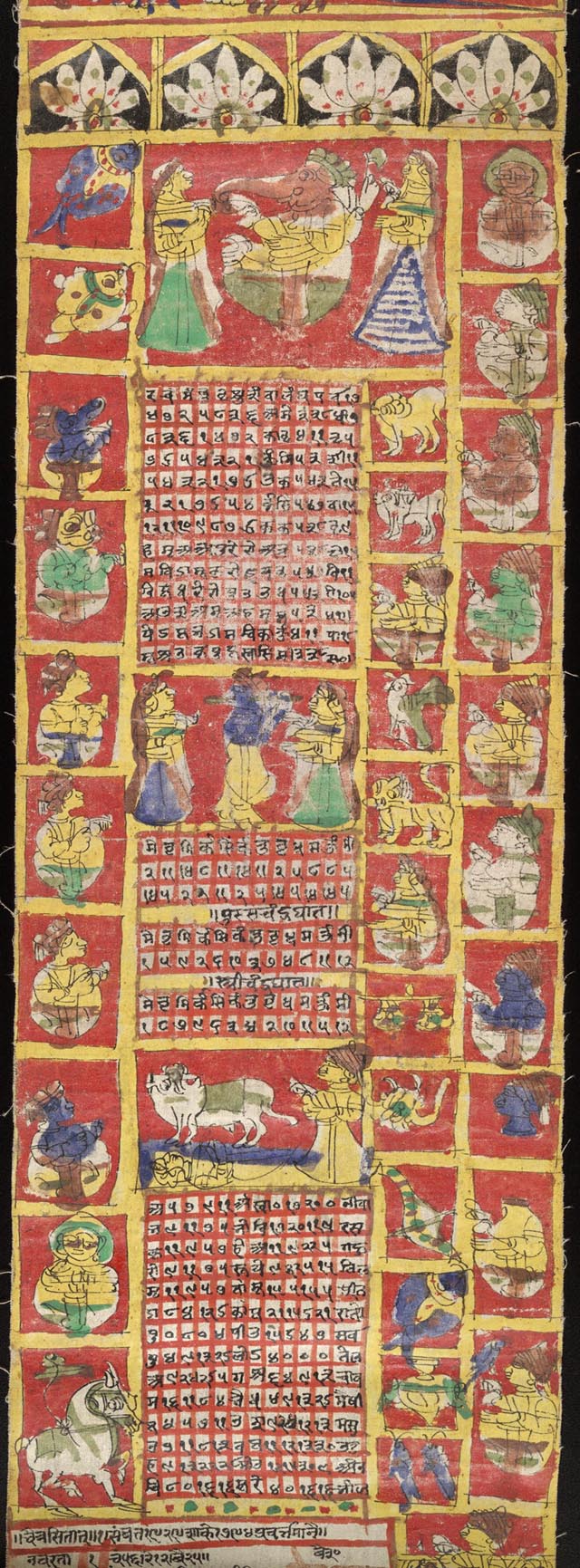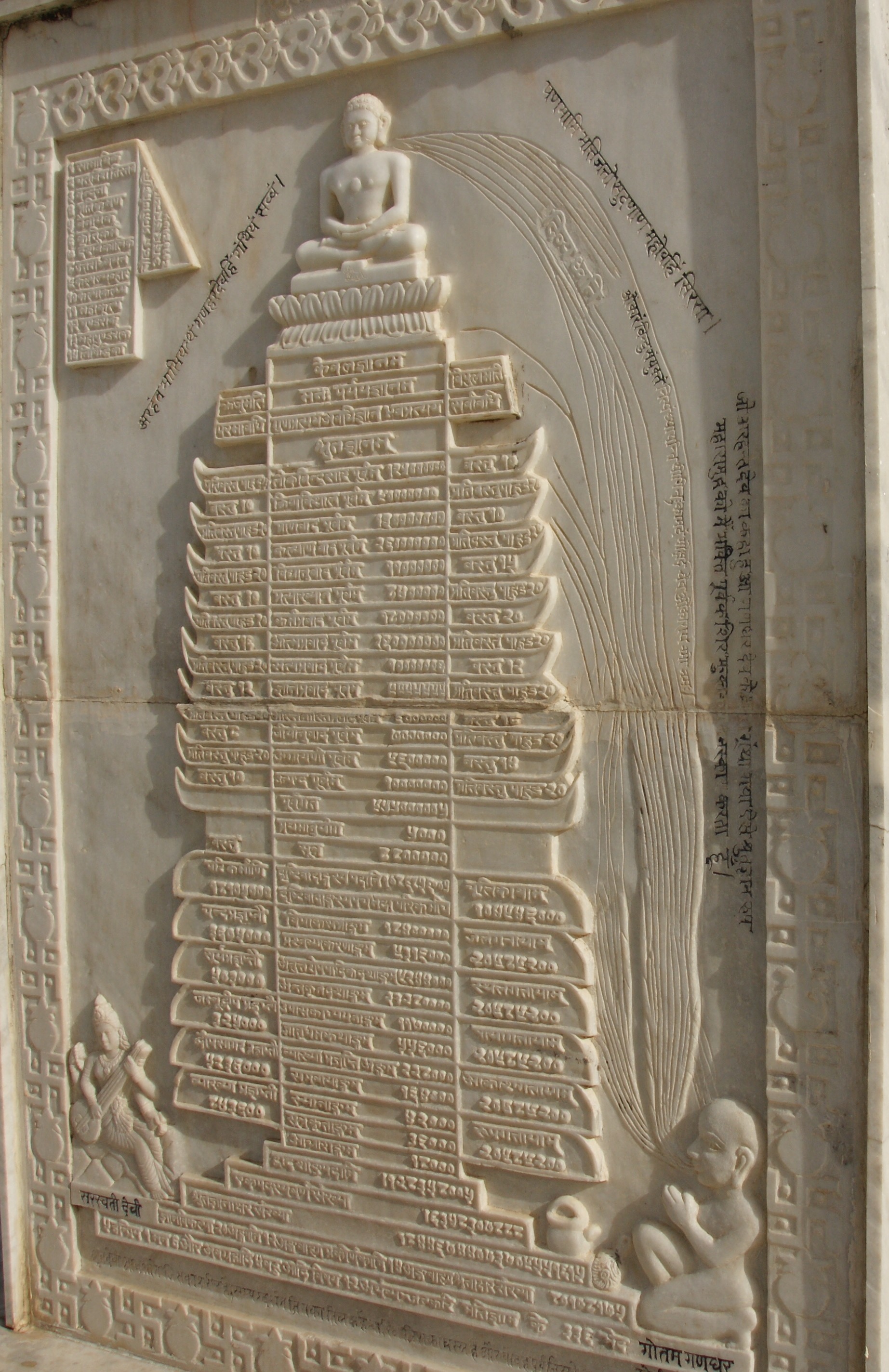|
Thrayodashi
Trayodashi is the Sanskrit word for "thirteen", and is the thirteenth day in the lunar fortnight ('' Paksha'') of the Hindu calendar. Each month has two Trayodashi days, being the thirteenth day of the "bright" (''Shukla'') and of the "dark" (''Krishna'') fortnights respectively. Thus Trayodashi occurs on the thirteenth and the twenty-eighth day of each month. Festivals * Dhanteras, also called ''Dhantrayodasi'', is the first day of Diwali. It occurs on Trayodashi in the month of Ashvin. * Mahavir Janma Kalyanak-According to Jain texts, Mahavira Mahavira (Devanagari: महावीर, ), also known as Vardhamana (Devanagari: वर्धमान, ), was the 24th ''Tirthankara'' (Supreme Preacher and Ford Maker) of Jainism. Although the dates and most historical details of his lif ... was born on the trayodashi of the bright half of the moon in the month of '' Chaitra'' in the year 599 BCE (Chaitra Sud 13).Kristi L. Wiley: ''Historical Dictionary of Jainism'', Lanham ... [...More Info...] [...Related Items...] OR: [Wikipedia] [Google] [Baidu] |
Paksha
Paksha () refers to a fortnight or a lunar phase in a month of the Hindu lunar calendar. Literally meaning "side", a paksha is the period either side of the '' purnima'' ( full moon day). A lunar month in the Hindu calendar has two fortnights, and begins with the '' amavasya'' ( new moon). The lunar days are called '' tithis;'' each month has 30 ''tithi''s, which may vary from 20 – 27 hours. A paksha has 15 ''tithi''s, which are calculated by a 12 degree motion of the moon. The first fortnight between the new moon day and the full moon day is called the Gaura Paksha or Shukla Paksha (), the period of the brightening moon ( waxing moon), and the second fortnight of the month is called the Vadhya Paksha or Krishna Paksha (), the period of the fading moon ( waning moon).Hindu calendar The [...More Info...] [...Related Items...] OR: [Wikipedia] [Google] [Baidu] |
Sanskrit
Sanskrit (; stem form ; nominal singular , ,) is a classical language belonging to the Indo-Aryan languages, Indo-Aryan branch of the Indo-European languages. It arose in northwest South Asia after its predecessor languages had Trans-cultural diffusion, diffused there from the northwest in the late Bronze Age#South Asia, Bronze Age. Sanskrit is the sacred language of Hinduism, the language of classical Hindu philosophy, and of historical texts of Buddhism and Jainism. It was a lingua franca, link language in ancient and medieval South Asia, and upon transmission of Hindu and Buddhist culture to Southeast Asia, East Asia and Central Asia in the early medieval era, it became a language of religion and high culture, and of the political elites in some of these regions. As a result, Sanskrit had a lasting effect on the languages of South Asia, Southeast Asia and East Asia, especially in their formal and learned vocabularies. Sanskrit generally connotes several Indo-Aryan languages# ... [...More Info...] [...Related Items...] OR: [Wikipedia] [Google] [Baidu] |
Hindu Calendar
The Hindu calendar, also called Panchangam, Panchanga (), is one of various lunisolar calendars that are traditionally used in the Indian subcontinent and Southeast Asia, with further regional variations for social and Hindu religious purposes. They adopt a similar underlying concept for timekeeping based on sidereal year for solar cycle, solar cycle and adjustment of lunar cycles in every three years, but differ in their relative emphasis to moon cycle or the sun cycle and the names of months and when they consider the New Year to start. Of the various regional calendars, the most studied and known Hindu calendars are the Shaka era, Shalivahana Shaka (Based on the Shalivahana, King Shalivahana, also the Indian national calendar) found in the Deccan Plateau, Deccan region of Southern India and the Vikram Samvat (Bikrami) found in Nepal and the North and Central regions of India – both of which emphasize the lunar cycle. Their new year starts in spring. In regions such as Tamil ... [...More Info...] [...Related Items...] OR: [Wikipedia] [Google] [Baidu] |
Dhanteras
Dhanatrayodashi (), also known as Dhanteras (), is the first day that marks the festival of Diwali or Tihar in most of India and Nepal It is celebrated on the thirteenth lunar day (Trayodashi) of Krishna Paksha (dark fortnight) in the Hindu calendar month of Ashwin (according to the amānta tradition) or Kartika (according to the Bikram Sambat tradition). Dhanvantari, who is also worshipped on the occasion of Dhanteras, is considered the god of Ayurveda who imparted the wisdom of Ayurveda for the betterment of mankind and to help rid it of the suffering of disease. The Indian ministry of Ayurveda, Yoga and Naturopathy, Unani, Siddha and Homeopathy announced its decision to observe Dhanteras as the "National Ayurveda Day", which was first observed on 28 October 2016. Celebrations Dhanteras is the worship of Dhanvantari. Dhanvantari, according to Hindu traditions, emerged during Samudra Manthana, holding a pot full of '' amrita'' (a nectar bestowing immortality) in on ... [...More Info...] [...Related Items...] OR: [Wikipedia] [Google] [Baidu] |
Diwali
Diwali (), also called Deepavali (IAST: ''Dīpāvalī'') or Deepawali (IAST: ''Dīpāwalī''), is the Hindu festival of lights, with variations celebrated in other Indian religions such as Jainism and Sikhism. It symbolises the spiritual victory of ''Dharma'' over ''Adharma'', light over darkness, good over evil, and knowledge over ignorance.Jean Mead, ''How and why Do Hindus Celebrate Divali?'', Diwali is celebrated during the Hindu calendar, Hindu lunisolar months of Ashvin (month), Ashvin (according to the Hindu calendar#amanta, amanta tradition) and Kartika (month), Kārtikabetween around mid-September and mid-November.''The New Oxford Dictionary of English'' (1998) – p. 540 "Diwali /dɪwɑːli/ (also Diwali) noun a Hindu festival with lights...". The celebrations generally last five or six days. Diwali is connected to various religious events, deities and personalities, such as being the day Rama returned to his Kosala, kingdom in Ayodhya (Ramayana), Ayodhya with h ... [...More Info...] [...Related Items...] OR: [Wikipedia] [Google] [Baidu] |
The Economic Times
''The Economic Times'' is an Indian English-language business-focused daily newspaper. Owned by The Times Group, ''The Economic Times'' began publication in 1961 and it is sold in all major cities in India. As of 2012, it is the world's second-most widely read English-language business newspaper, after ''The Wall Street Journal'', with a daily readership of over 800,000. According to the Audit Bureau of Circulations (India), Audit Bureau of Circulations, the newspaper's Print circulation, circulation averaged 269,882 copies during the latter half of 2022. It is published simultaneously from 14 cities: Mumbai, Bangalore, Delhi, Chennai, Kolkata, Lucknow, Hyderabad, Jaipur, Ahmedabad, Nagpur, Chandigarh, Pune, Indore, and Bhopal. Its main content is based on the Economy of India, Indian economy, international finance, share prices, prices of commodities as well as other matters related to finance. This newspaper is Publishing, published by Bennett Coleman & Co. Ltd, Bennett, Cole ... [...More Info...] [...Related Items...] OR: [Wikipedia] [Google] [Baidu] |
Ashvin
Ashvin or Ashwin or Ashwan (; ; Malay/ Indonesian: ''Aswin''; Thai: ''Asawin''), also known as Aswayuja, is the seventh month of the lunisolar Hindu calendar, the solar Tamil calendar, where it is known as Aippasi, and the solar Indian national calendar. It is the sixth month of the solar Bengali calendar and the seventh of the lunar Indian calendar of the Deccan Plateau. It falls in the season of ''Sharada'', or autumn. In Hindu astrology, Ashvin begins with the Sun's enter into Virgo. It overlaps with September and October of the Gregorian calendar and is the month in which Diwali, the festival of lights, is celebrated according to the amanta tradition (Diwali falls in Kartika according to the purnimanta tradition). In lunar religious calendars, Ashvin begins on the new moon or the full moon around the time of the September equinox. Etymology Ashvini is the first star that appears in the evening sky. In Indian astrology, it is the head of Aries, or the first of the ... [...More Info...] [...Related Items...] OR: [Wikipedia] [Google] [Baidu] |
Mahavir Janma Kalyanak
Mahavira Janma Kalyanaka is one of the most important religious festivals in Jainism. It celebrates the birth of Mahavira, the twenty-fourth and last Tīrthaṅkara (supreme preacher) of present Avasarpiṇī. On the Gregorian calendar, the festivity occurs either in March or April. Birth According to Jain texts, Mahavira was born on the thirteenth day of the bright half of the moon in the month of '' Chaitra'' in the year 599 BC (Chaitra Sud 13). According to Shvetambara tradition, he was born in Kshatriyakund of Bihar. Some modern historians consider Kundagram (which is today's Kundalpur in Muzaffarpur district of Bihar) as his birthplace. He was born in a democratic kingdom (Ganarajya), Vajji, where the king was chosen by votes. Vaishali was its capital. He was named Vardhamana, meaning "One who grows", because of the increased prosperity in the kingdom at the time of his birth. In Vasokund, Mahavira is revered by the villagers. A place called ''Ahalya bhumi'' has n ... [...More Info...] [...Related Items...] OR: [Wikipedia] [Google] [Baidu] |
Jain Literature
Jain literature () refers to the literature of the Jain religion. It is a vast and ancient literary tradition, which was initially transmitted orally. The oldest surviving material is contained in the canonical ''Jain Agamas'', which are written in Ardhamagadhi, a Prakrit ( Middle-Indo Aryan) language. Various commentaries were written on these canonical texts by later Jain monks. Later works were also written in other languages, like Sanskrit and Maharashtri Prakrit. Jain literature is primarily divided between the canons of the ''Digambara'' and '' Śvētāmbara'' orders. These two main sects of Jainism do not always agree on which texts should be considered authoritative. More recent Jain literature has also been written in other languages, like Marathi, Tamil, Rajasthani, Dhundari, Marwari, Hindi, Gujarati, Kannada, Malayalam and more recently in English. Beliefs Jains believe their religion is eternal, and the teachings of the first tīrthaṅkara, Ṛṣa ... [...More Info...] [...Related Items...] OR: [Wikipedia] [Google] [Baidu] |
Mahavira
Mahavira (Devanagari: महावीर, ), also known as Vardhamana (Devanagari: वर्धमान, ), was the 24th ''Tirthankara'' (Supreme Preacher and Ford Maker) of Jainism. Although the dates and most historical details of his life are uncertain and varies by sect, historians generally consider that he lived during the 6th or 5th century BCE, reviving and reforming a proto-Jain community (which had possibly been founded by Pārśvanātha), and that he was an older contemporary of Gautama Buddha. Jains regard him as the spiritual successor of the 23rd ''Tirthankara'' Parshvanatha. According to traditional legends and hagiographies, Mahavira was born in the early 6th century BCE to a royal Kshatriya Jain family of ancient India. His mother's name was Trishala and his father's name was Siddhartha. According to the second chapter of the Śvētāmbara Ācārāṅga Sūtra, Siddhartha and his family were devotees of Parshvanatha. Mahavira abandoned all worldly p ... [...More Info...] [...Related Items...] OR: [Wikipedia] [Google] [Baidu] |
Chaitra
Chaitra () is a month of the Hindu calendar. In the standard Hindu calendar and India's national civil calendar, Chaitra is the first month of the year. It is the last month in the Bengali calendar, where it is called Choitro. Chaitra or Chait is also the last month in the Nepali calendar (the Vikram Samvat), where it commences in mid-March. Chittirai is the first month in the Tamil calendar. In the Sindhi calendar, this month is referred to as Chet and is marked by the celebration of the Cheti Chand (birth of Jhulelal, an incarnation of Vishnu). In the Vaishnava calendar, Vishnu governs this month. In solar religious calendars, Chaitra begins with the Sun's entry into Aries. In the more traditional reckoning, the first month commences in March or April of the Gregorian calendar, depending upon whether the adhika masa (extra month for alignment of lunar or solar calendar) was observed in the year. The first day of Chaitra is marked as the , the Hindu lunar new year. N ... [...More Info...] [...Related Items...] OR: [Wikipedia] [Google] [Baidu] |





